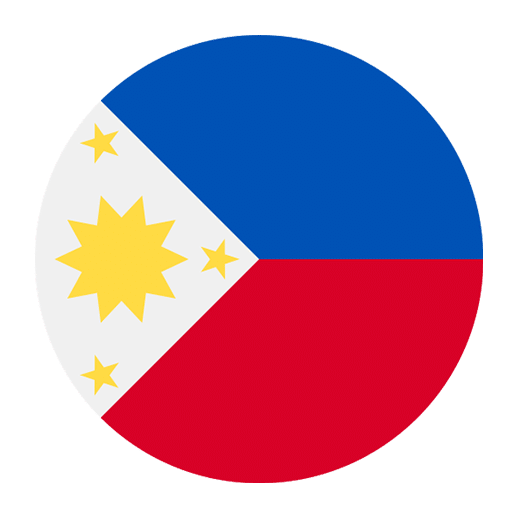The rich tapestry of Filipino culture is woven with diverse threads, each representing different aspects of the archipelago’s history, traditions, and identity. One of the most significant and vibrant threads is the Tagalog language. As one of the major languages spoken in the Philippines, Tagalog plays a crucial role in cultural preservation. It acts as a vessel for conveying history, folklore, traditions, and the collective memory of the Filipino people. This article delves into the importance of Tagalog in maintaining and enriching Filipino culture.
Historical Significance of Tagalog
Tagalog has a profound historical significance that dates back centuries. Before the Spanish colonization in the 16th century, the native Tagalog-speaking people had already developed a rich oral and written tradition. The ancient script known as Baybayin was used to write Tagalog and other Philippine languages, preserving literature, poetry, and legal documents. These early writings are testimonies to the advanced and intricate culture that existed long before foreign influence.
When the Spanish arrived, they imposed their language and culture, yet Tagalog persisted. It adapted by incorporating Spanish words and phrases, creating a unique creole that reflects the Filipinos’ ability to absorb and blend different influences while maintaining their identity. This adaptability is a testament to the resilience of the Tagalog language and its speakers.
Tagalog in the American Period
The American colonization introduced English as a medium of instruction and government. However, Tagalog continued to thrive as the language of the masses. The establishment of public education systems in the early 20th century led to a bilingual populace, but Tagalog remained the heart of everyday communication. It was during this period that Tagalog began to emerge as the foundation for the national language.
In 1937, President Manuel L. Quezon declared Tagalog as the basis for the national language, later named Filipino. This decision was pivotal in unifying the various linguistic groups in the Philippines under a common language, fostering a sense of national identity and pride.
Tagalog as a Medium of Cultural Expression
Language is a powerful tool for cultural expression, and Tagalog is no exception. It is the language through which many Filipinos express their thoughts, emotions, and creativity. From traditional folk songs (kundiman) to contemporary music, Tagalog serves as the medium for a wide range of artistic expressions.
Literature and Poetry
Tagalog literature is a rich field that encompasses various genres, including poetry, short stories, and novels. Renowned authors like Francisco Balagtas, José Rizal, and Lualhati Bautista have used Tagalog to craft works that reflect the Filipino experience. Balagtas’ “Florante at Laura” is a classic epic poem that explores themes of love, betrayal, and social justice, while Rizal’s novels “Noli Me Tangere” and “El Filibusterismo” played crucial roles in the Philippine revolution against Spanish rule.
Tagalog poetry, especially the traditional form known as “balagtasan,” is a vibrant form of cultural expression. Balagtasan is a poetic debate where poets engage in a battle of wits and words, showcasing the beauty and flexibility of the Tagalog language. This tradition continues to be celebrated in various cultural festivals and competitions across the Philippines.
Music and Dance
Music and dance are integral parts of Filipino culture, and Tagalog plays a significant role in these art forms. Traditional Filipino music, like the harana (serenade) and kundiman (love song), often feature lyrics in Tagalog. These songs are not just melodies but are storytelling devices that convey emotions, histories, and social commentaries.
Contemporary Filipino music, including the popular Original Pilipino Music (OPM) genre, also predominantly uses Tagalog. Artists like Freddie Aguilar, Gary Valenciano, and Regine Velasquez have produced iconic songs that resonate with Filipinos worldwide. These songs often address themes of love, patriotism, and social issues, reflecting the collective consciousness of the Filipino people.
Dance forms like the Tinikling and Cariñosa, while performed to instrumental music, are often accompanied by songs and chants in Tagalog. These dances are not just performances but are reenactments of historical and cultural narratives, preserving the traditions and stories of the past.
Tagalog in Media and Popular Culture
The advent of mass media has significantly impacted the dissemination and preservation of Tagalog. Television, radio, film, and the internet have become powerful platforms for promoting and sustaining the language.
Television and Radio
Tagalog is the primary language used in Filipino television and radio programs. Popular television dramas (teleseryes), variety shows, and news broadcasts use Tagalog, making it accessible to a broad audience. These programs often reflect Filipino values, traditions, and societal issues, reinforcing cultural identity through language.
Radio programs, especially those featuring traditional and contemporary Filipino music, also play a crucial role in preserving Tagalog. Talk shows, drama series, and news segments in Tagalog ensure that the language remains relevant and widely used.
Film and Cinema
The Filipino film industry, known as “Pinoy cinema,” has a long history of producing films in Tagalog. Classic films like “Maynila: Sa mga Kuko ng Liwanag” (Manila in the Claws of Light) and “Himala” (Miracle) are not only cinematic masterpieces but also cultural treasures that depict Filipino life, struggles, and aspirations.
Contemporary filmmakers continue to use Tagalog to tell stories that resonate with both local and international audiences. Films like “Heneral Luna,” “Kita Kita,” and “Goyo: Ang Batang Heneral” have garnered critical acclaim and have contributed to the global recognition of Filipino cinema. These films, through their use of Tagalog, help in preserving and promoting Filipino culture and history.
The Internet and Social Media
The digital age has opened new avenues for the preservation and promotion of Tagalog. Social media platforms, blogs, and websites provide spaces for Filipinos to communicate, share stories, and express their cultural identity in Tagalog. Online communities and influencers play a significant role in keeping the language vibrant and relevant, especially among the younger generation.
Platforms like YouTube and TikTok have become popular for content creators who produce videos in Tagalog, ranging from educational content to entertainment. This digital presence ensures that Tagalog continues to evolve and adapt to modern contexts while preserving its cultural essence.
Tagalog in Education and Academia
Education is a vital tool for cultural preservation, and the inclusion of Tagalog in the academic curriculum is crucial for maintaining the language and its cultural significance.
Basic Education
In the Philippines, Tagalog is taught as part of the basic education curriculum. Students learn to read, write, and speak Tagalog, as well as study its literature and grammar. This formal education ensures that every Filipino child is proficient in Tagalog, fostering a sense of national identity and cultural pride.
The Department of Education’s K-12 curriculum includes subjects like Filipino language and literature, which are crucial for preserving the linguistic and cultural heritage. Through these subjects, students are introduced to the works of Filipino authors, poets, and playwrights, gaining an appreciation for their cultural legacy.
Higher Education and Research
Tagalog is also a subject of academic research and study in higher education institutions. Universities offer courses in Philippine linguistics, literature, and cultural studies, where Tagalog plays a central role. Scholars and researchers contribute to the understanding and preservation of the language through their work, exploring its history, structure, and evolution.
Academic conferences, journals, and publications focused on Tagalog and Filipino culture provide platforms for the dissemination of knowledge and research findings. These efforts ensure that Tagalog remains a vibrant and dynamic field of study, contributing to the broader understanding of Filipino culture.
Challenges and Future Prospects
While Tagalog plays a crucial role in cultural preservation, it also faces challenges in the modern world. The increasing influence of globalization, the dominance of English, and the rise of digital communication pose potential threats to the continued use and development of Tagalog.
Globalization and Language Shift
Globalization has led to the widespread use of English as a global lingua franca. In the Philippines, English is often seen as a language of opportunity and success, leading to a preference for English in business, education, and media. This shift towards English can sometimes marginalize Tagalog and other Philippine languages, especially among the younger generation.
Digital Communication
The rise of digital communication and social media has also impacted language use. The informal nature of online communication often leads to a blending of languages, with Filipinos using a mix of Tagalog and English (Taglish) in their interactions. While this linguistic blending reflects the dynamic nature of language, it also raises concerns about the purity and preservation of Tagalog.
Efforts for Preservation and Promotion
Despite these challenges, efforts to preserve and promote Tagalog continue. Cultural organizations, government agencies, and educational institutions are actively working to ensure the survival and development of the language.
The Komisyon sa Wikang Filipino (Commission on the Filipino Language) plays a crucial role in promoting and protecting the Filipino language, including Tagalog. The commission conducts research, develops language policies, and organizes events to celebrate and promote Filipino linguistic heritage.
Cultural festivals and events, such as the Buwan ng Wika (Language Month), celebrate the Filipino language and culture. These events encourage the use of Tagalog and other Philippine languages in various forms of expression, from literature and music to dance and theater.
Conclusion
Tagalog is more than just a language; it is a repository of the Filipino soul. It carries within it the history, traditions, and values of the Filipino people. As a medium of cultural expression, a tool for education, and a cornerstone of national identity, Tagalog plays a vital role in preserving and enriching Filipino culture.
In the face of modern challenges, it is essential to recognize and support the efforts to maintain and promote Tagalog. By doing so, we ensure that future generations of Filipinos can continue to connect with their heritage, understand their history, and take pride in their unique cultural identity.

